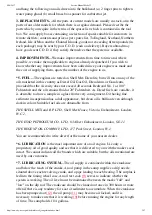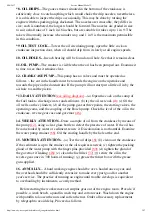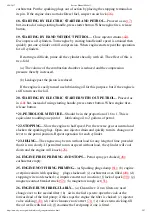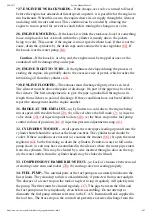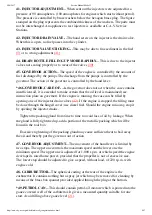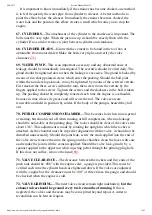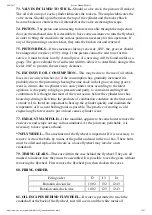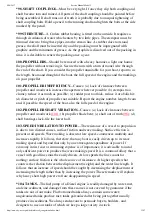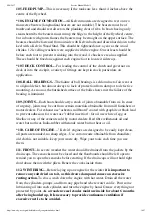
9/26/2017
Service Manual Model J
http://www.sky-net.org.uk/kelvin/diesel/j_range/man/index.html
6/17
*27. ENGINE RUNS BACKWARDS.--If the change-over valve is turned to Diesel
before the engine has attained sufficient speed on petrol, it is possible for the engine to
run backwards. When this occurs, the engine draws its air supply through the silencer
and along with it water and soot. This condition can be avoided by allowing the
engine to run on petrol for several seconds before turning the change-over valve.
28. ENGINE KNOCKING.--If the knock is within the crankcase, look for something
loose, misplaced or hot. A knock within the cylinder is usually due to the jackets
being too cold. This occurs if the engine is run at speed without load. If that is not the
cause, drain the cylinders by the drain caps and examine the water regulator
the knock is at the water pump
.
Caution.--If the knock is at a big end, the engine must be stopped at once or the
crankshaft will be damaged beyond repair.
29. ENGINE TIGHT TO TURN.--If the tightness developed during the process of
starting the engine, it is probably due to the excessive use of petrol, which washes the
lubricating oil from the cylinders
.
*30. ENGINE FLOODED.--The exhaust must discharge slightly above sea level.
The silencer must be above the point of discharge. No part of the pipe may be above.
the silencer. The best arrangement is to give the pipe a gradual fall through out its
length from silencer to point of discharge. If these conditions have not been fulfilled
report the arrangement and the engine number.
31. SMOKE AT THE EXHAUST.--(a) Cylinders too cold due to the engine being
run at speed with the clutch out
; (b) oil level above the full mark
; (c) injector
valve stuck
; (d) injection point too late
; (e) the brass stop on the fuel pump
; (f) injection pressure adjustment wrong
.
32. CYLINDERS TOO HOT.--At all speeds the waterpipes leading upward from the
cylinder barrel should be as hot as the hand can bear. The cylinder head should be
cooler. If these conditions are not met (a) examine the strainer
, (b) open the water
, but before doing so drain the cylinders. Permit no water to fall on the
pump shaft; (c) salt may have accumulated in the silencer where the water pipe enters
from the cylinders. This may be cleared by a wire inserted through a door on the top;
(d) the water outlets from the cylinder heads may be choked with salt.
33. COMPRESSION CHAMBER RUNS HOT.--(a) Lack of clearance between end
of starting valve stem and rocker
; (b) starting valve not seating properly.
34. FUEL PUMP.--The internal parts of the fuel pump are accurately finished to the
finest limits. They stand up to their work indefinitely if protected from water and grit.
The absence of a water trap on the tank or neglect to tap it regularly will quickly ruin
the pump. The filter must be cleaned regularly
. The pipe between the filter and
the fuel pump must be scrupulonsly clean before assembling. Do not attempt to
dismantle the fuel pump without reference to the C.A.V. Instruction Book supplied in
the tool box. The brass stop on the control rod prevents excessive discharge from the


